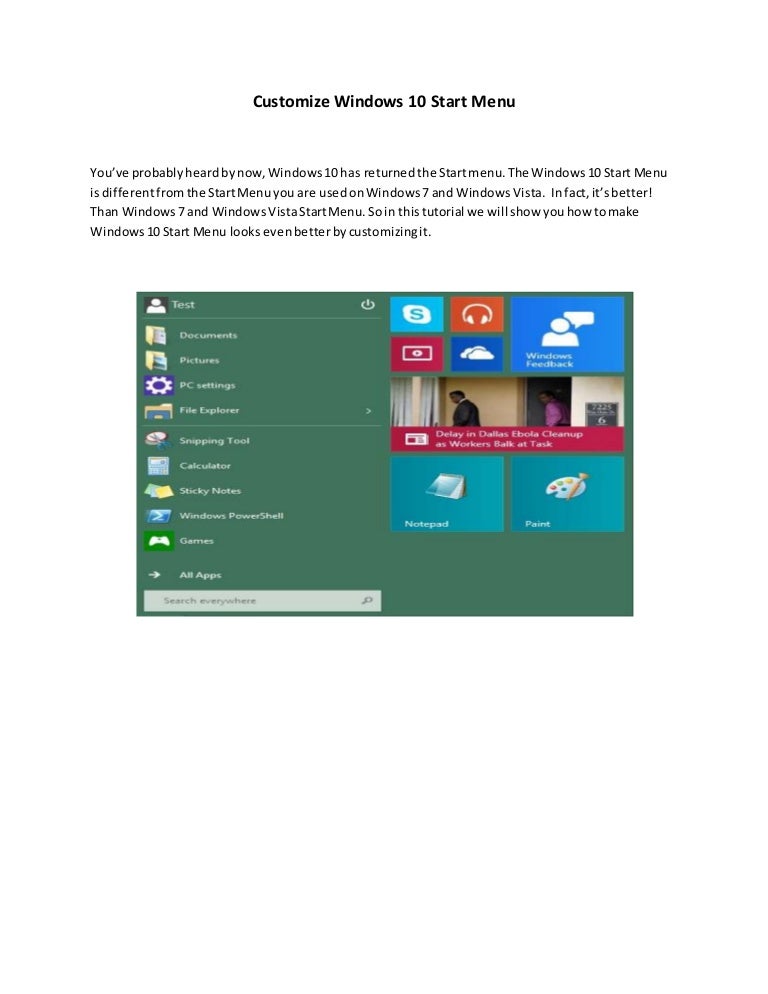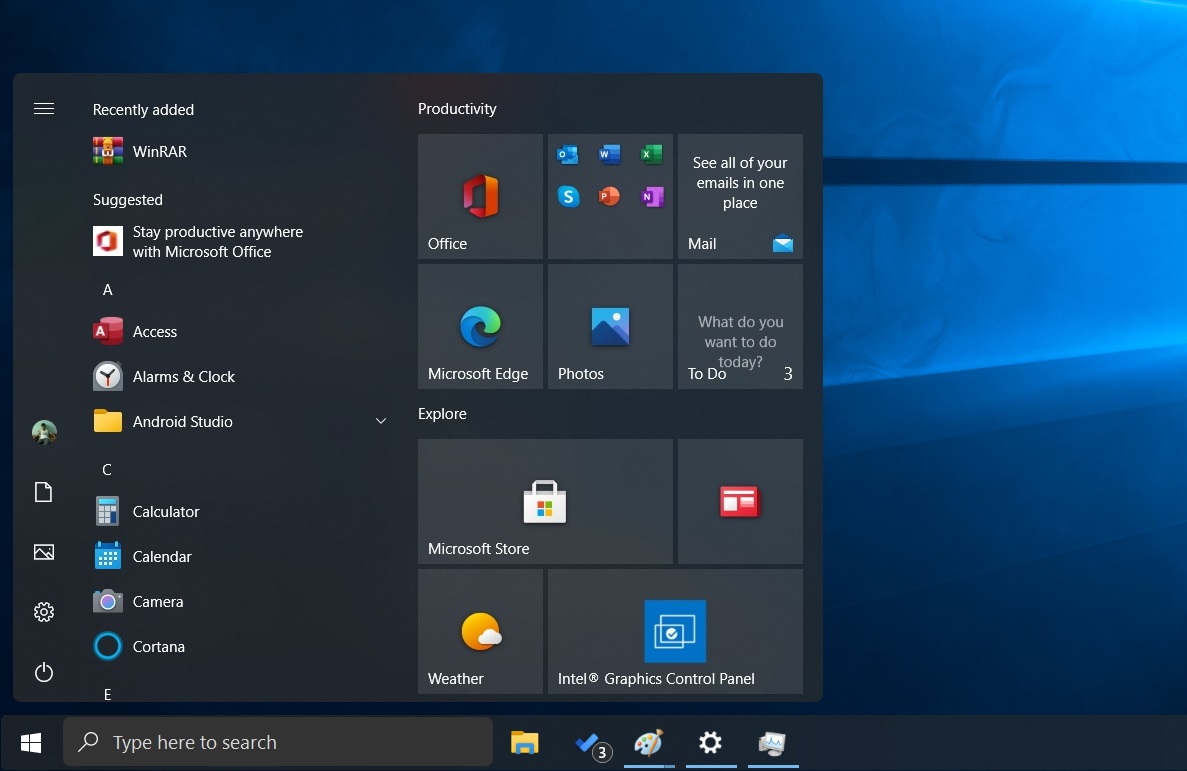

- #Customize windows 10 start menu task sequence how to
- #Customize windows 10 start menu task sequence install
- #Customize windows 10 start menu task sequence update
- #Customize windows 10 start menu task sequence series
#Customize windows 10 start menu task sequence install
On the Install Applications tab, click on the Star Icon to add any application that you want to be installed during your deployment.
#Customize windows 10 start menu task sequence update
#Customize windows 10 start menu task sequence how to

#Customize windows 10 start menu task sequence series
More information can be found in the following article, link.In the second post of this blog series about Windows 10 Deployment using SCCM, we will show you how to create a SCCM Windows 10 Task Sequence and deploy it. Create a GPO Computer Configuration – Scripts (Startup/Shutdown) – Startup – Scripts and browse to the cmd script file in the netlogon share (for example \\lab.local\netlogon\w11\w11startmenu.cmd)Īll users who log in with a new profile will get the customized Windows 11 Start Menu.Create a cmd file called w11startmenu.cmd with the following context:Ĭopy "\\lab.local\netlogon\w11\start2.bin" "C:\Users\Default\AppData\Local\Packages\_cw5n1h2txyewy\LocalState" /Y.Copy the start2.bin file in from the %LocalAppdata%\Packages\_cw5n1h2txyewy\LocalStatefolder to a central location (for example in a folder in the netlogon share of the domain controller (for example \\lab.local\netlogon\w11).Pin/unpin and organize the apps in the Start Menu the way you want.When new users logs in, they will get the customized Start Menu. These steps will copy the modified Start Menu to a central location and when the endpoint starts the modified Start Menu will be copied to the default user profile. This file is the Windows 11 Start Menu that can be copied.

In this folder, there is a start.bin or start2.bin (depending on the Windows 11 version) file. In Windows 11 the Start Menu is stored in a single encrypted file in the following folder location: %LocalAppdata%\Packages\_cw5n1h2txyewy\LocalState The Group Policy only works with an XML file. There is no Group Policy (Windows 11 22H2) to import a Start Menu JSON file. The command is like this: Export-StartLayout -Path "C:\Layouts\LayoutModification.JSON" In Windows 11, the Start Menu is exported to a JSON file. With a Group Policy, you refer to the custom XML file. With the “Export-StartLayout” PowerShell command, the Start Menu is exported to an XML file. In Windows 10 you can export and import the Start Menu layout. In this blog post, I will highlight how to customize the Windows 11 Start Menu with native Active Directory Group Policies. Customize the Windows 11 Start Menu (this blog post).I will create several blog posts about how to customize the Windows 11 Start Menu, configure the taskbar, remove unwanted desktop icons and remove bloatware and apps. In this blog post, I will highlight how to manage the Start Menu with native tools such as Active Directory and Group Policies. There are many environments (such as VDI and Azure Virtual Desktop(AVD) that don’t use an MDM provider to manage their Windows 11 workspace environment. Microsoft recommended an MDM provider such as Microsoft Intune to manage the Windows 11 Start Menu. Start Menu management in Windows 11 is different than Windows 10.


 0 kommentar(er)
0 kommentar(er)
